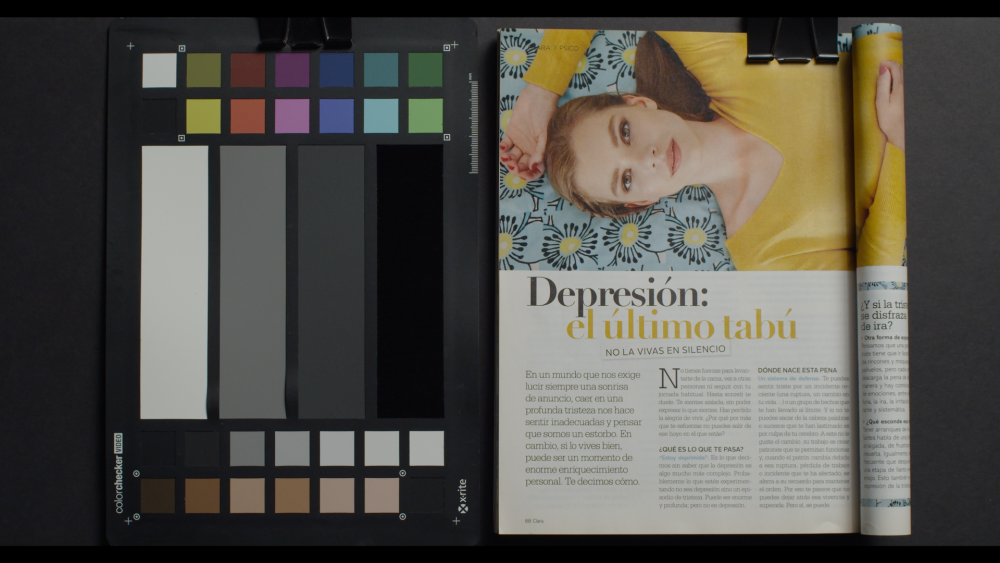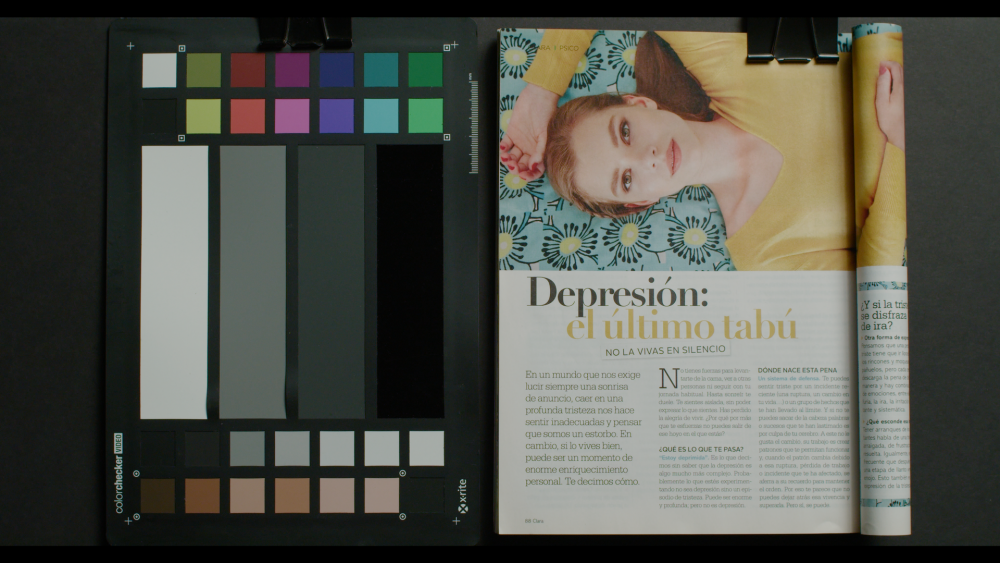-
Posts
659 -
Joined
-
Last visited
Content Type
Profiles
Forums
Articles
Everything posted by Sage
-
Its becoming apparent there is a need for an Ursa variation. It will be a priority once the S is ready
-
@thebrothersthre3 Mmm downsample ftw. I'll take a closer look at that
-
Righto, I like to force 2.5K for motion and load speed. But I know you're a 4K guy
-
It appears there is only the option to set Quality to Auto-Best, or to restrict the upper bitrate (unlike Premiere). I gather that they've looked at the needed bitrate for each quality ranking, and kept the works 'under the hood'
-
When exporting to YT and Vimeo from Resolve, I've found h.265 to be optimal. There is a slight magenta shift when the video sites re-encode the footage, and I've found it to be slightly less with h.265 (the colors are slightly more accurate). The difference for h.265, to compensate during export, is a node with -3 Tint. H.265 is also a much smaller filesize, which is less heavy on the Vimeo upload quota, and there is no size penalty for higher resolution. However, I've found the sweet spot for streaming video sites is 2560x1440 (or 2560 pixels wide). The load times are not much worse than 1080p, but the apparent visual quality is much better (because 1080p is very compressed for streaming on these sites). The load times for 4k are much higher, with less of a leap in visual quality. Also, the fluidity of playback for 2560 is smoother than compressed 4k for streaming. Here are my Resolve settings (horizontal resolution to match aspect ratio):
-
Righto, this is the one: I intend to revise the tutorial to be more concise, yet more informative and clear.
-
That could be done; granted it wouldn't be tailored to the sensor. I'd like to support it directly, and I think there may be some rental options that would make that feasible.
-
Very nice! I liked the edit flow in the first, and that coffee shot at 0:40 was great
-
I haven't looked at it in-depth yet, but from what I've seen there are subtle differences (i.e. green). Overall, the default color of the 6k is a little nicer. The sensor response as things fall into shadow is a little different. I'll know more soon.
-
Thank you Zeng; I need the cameras in hand, as the measurement phase is the trickiest, now that Gen4 is figured out. The code is based around a sample system I made that has ~1k samples per slice, with ~40 slices, and the measurement conditions are defined; often it must be redone several times before everything is sorted out with a new camera. I will move with considerably more efficiency to support new cameras, now that Gen 4 is finalized.
-
Oh, I understand now. EC Gen.4 is at the theoretical limit of smoothness, acting like a pass through of source material. This means that if the source material is of sufficient bit depth (for sparse regions), its like the conversion is transparent. This allows for Pre format stacking to support formats like HLG and Cine-D (which will see a major improvement with Gen4) - two V4 cubes stacked is identical to one summed, unless they are intricate 33x with bad interpolation (AE - bad, Premiere - good, Resolve with tetrahedral - very good). Nodes following thereafter may introduce artifacts of their own (the final space is only as clean as the most problematic link in the chain), but EC as yet doesn't cover creative looks etc. One may use the EC gradient chart to verify that each new grade step is not introducing problems in the wider space. @Mark Romero 2 Thank you - what camera do you use?
-
That's right, only one is needed for the entirety of the range. Conversion accuracy is 'exposure independent'; though white balance will affect accuracy. With Exp Comps, it is now possible to dynamically allocate scene range for the 709 display variations in post without affecting core accuracy. Spell this one out for me - 'So would having a set of EC LUTS for emulation film stock or an ideal sensor response LUT would benefit from having an EC LUT for each target output to do it in a single conversion?' I couldn't quite follow
-
Sure, Resolve CST is a whitepaper transform, according to the manufacturer spec for the formats. EC is a measured LogC under sunlight and halogen. EC has a unique 709 display component that maintains full gamut (exceeding Arri 709). P4K CST LogC+Arri 709: P4K EC 709:
-
Mmm, even with the GH5, I often hear of the green/red macroblock codec issue at 10 bit (really just a codec situation moreso than 10 bit). If the 8 bit is really good, and a cleverly stored 709 format, it could work.
-
@jack jin Sure; you'll find the P4K to be similar. The summary of it is that Day will be greener under tungsten (always ensure skintone maintains contact with the skintone line on the vectorscope afterwards). The whole color space is slightly different, with each color weaving a divergent path up through the space. @majoraxis Thanks majoraxis, all things are equal up to the cube; ABL must follow the conversion node, and is only on P4Ka for the comparison. WB is actually on the raw clip itself rather than a node (unlike GHa), as the Camera Raw tab is used for a completely accurate WB adjustment @MeanRevert These are good notes for my next tutorial revision The Pre and Posts are much better - Exp Comp Pres are actually complete color conversions that capture the difference in sensor response with varying brightness (they include the rolloff and brighter than 1.0 region as well). And they are incredibly precise to actually stopping up or down in camera (preserving core LogC accuracy). The Posts simply have hue lock built in, and are an optimal luminance adjustment (preserving linearity above black). They are really fast to use, and are a major time saver. They also have a negative region preserved (below 0.0), and therefore not destructive to dark saturation data. That said, for a film, additional luminance adjustment after Post is recommended, to conform the scene details to cinema standard scene luminance (supplemental waveforms)
-
Ah, nice find. I was going to post that in the P4K thread - though I will be posting the tutorial video in the P4K thread Its true; almost everyone doesn't read the Pdf in the first week, and then maybe a few later on. So I've come to the conclusion that a video and quick guide are very much needed
-
The time it takes to support the S and update the 5 will be a *very strong indicator of how efficiently I am able to support new cameras. If I can do it in weeks, that will be a very positive sign for the S1/H, Ursa, XT3
-
Thanks RCV! I've been absurdly busy. One of the standout features of the P4K for me (coming from the 5) is being able to preview 33x on the big screen. Its so much better than the vlt. But IBIS is sorely missed. I wanted to shoot an epic creative piece, but alas was too booked, and the sunny season slipped by
-
*That's a better idea @Jonesy Jones Let me know what you think!
-
Thanks Video Hummus; the S will be Gen.4 right out of the gate, and that is the very next camera (along with the GH5 update) The core conversion is to a measured LogC (what Alexa records to). Then there are the display variations, which include the 709 display primaries from Arri all-in-one. Then there are the display look-ups from Arri itself (to be added to LogC), and their Rec 709 does clip far gamut.
-
Its 65x, spread out over a bit of HDR region (to support Highlight Recovery mode)
-
Hey Attila, the res might be a bit low
-
Sure, take non-jpg stills, my email is emotivecolor@gmail.com








